AMD Teases Radeon RX 480: Launching June 29th For $199
by Ryan Smith on May 31, 2016 10:00 PM EST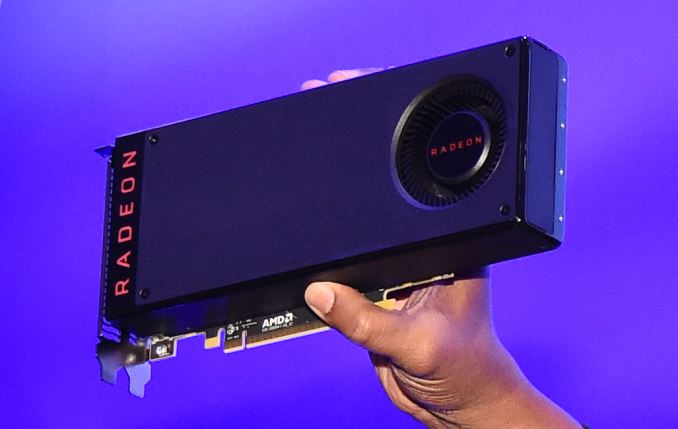
Kicking off at this moment is AMD’s Computex 2016 keynote. The company has multiple announcements scheduled this evening, but we’re going to jump right into an area that has been of extreme interest for many of our readers: GPUs.
Ahead of this evening’s event, AMD sent out an email to the press teasing the first of their discrete Polaris architecture based cards. Called the Radeon RX 480, AMD has unveiled much of the product’s specifications, but also its price and availability. When the card hits the streets on June 29th, it will be starting at the crucial mainstream battleground price point of $199.
| AMD Radeon GPU Specification Comparison | ||||||
| AMD Radeon RX 480 | AMD Radeon R9 390X | AMD Radeon R9 390 | AMD Radeon R9 380 | |||
| Stream Processors | 2304 (36 CUs) |
2816 (44 CUs) |
2560 (40 CUs) |
1792 (28 CUs) |
||
| Texture Units | (Many) | 176 | 160 | 112 | ||
| ROPs | (A Positive Integer) | 64 | 64 | 32 | ||
| TFLOPs (FMA) | >5 TFLOPs | 5.9 TFLOPs | 5.1 TFLOPs | 3.5 TFLOPs | ||
| Boost Clock | >1.08GHz | 1050MHz | 1000MHz | 970MHz | ||
| Memory Clock | 8Gbps GDDR5 | 5Gbps GDDR5 | 5Gbps GDDR5 | 5.5Gbps GDDR5 | ||
| Memory Bus Width | 256-bit | 512-bit | 512-bit | 256-bit | ||
| VRAM | 4GB/8GB | 8GB | 8GB | 2GB | ||
| Transistor Count | ? | 6.2B | 6.2B | 5.0B | ||
| Typical Board Power | 150W | 275W | 275W | 190W | ||
| Manufacturing Process | GloFo 14nm FinFET | TSMC 28nm | TSMC 28nm | TSMC 28nm | ||
| Architecture | GCN 4 | GCN 1.1 | GCN 1.1 | GCN 1.2 | ||
| GPU | Polaris 10? | Hawaii | Hawaii | Tonga | ||
| Launch Date | 06/29/16 | 06/18/15 | 06/18/15 | 06/18/15 | ||
| Launch Price | $199 | $429 | $329 | $199 | ||
First off, the RX 480 will include 36 CUs. If we assume 64 stream processors to a CU – the GCN standard – then this brings us to 2304 SPs. AMD has not named the specific Polaris GPU being used here, but given the CU count I believe it’s reasonable to assume that this is a Polaris 10 SKU, as I’ve already seen Polaris 11 and it’s a very small chip better suited for notebooks.
AMD also revealed that the card would offer over 5 TFLOPs of compute performance. Given what we know about the CU count, this allows us to estimate the GPU clockspeed. This puts the lower bound of the GPU clockspeed at 1.08GHz and an upper bound (6 TFLOPs) at 1.3GHz, which would be in the range of 10-30% higher clocked than comparable Radeon 300 series cards.
In terms of raw numbers this puts the RX 480 just shy of the current Radeon R9 390. However it also doesn’t take into account the fact that one of the major focuses for Polaris will be in improving architectural efficiency. I would certainly expect that even at the lower end of clockspeed estimates, RX 480 could pull ahead of the R9 390, in which case we’re looking at a part that would deliver performance between the R9 390 and R9 390X, with final clockspeeds and architectural efficiency settling just how close to R9 390X the new card gets.
On the memory front the card is equipped with 8Gbps GDDR5, running along a 256-bit memory bus. This is the typical bus width for AMD x80-series cards, and the high clocked 8Gbps GDDR5 means that we’re looking at a total of 256GB/sec of memory bandwidth to feed the RX 480’s GPU. AMD’s partners will be offering both 4GB and 8GB cards, and for the purposes of this teaser I assume that pricing information will be for the 4GB card, with 8GB serving as a premium option.
Finally, AMD has also revealed the TDP for the RX 480, stating that it will be a 150W card. As Polaris is built on 14nm FinFET, we’re seeing first-hand the benefits of finally making the long-awaited jump off of 28nm, as this means we’re looking at Radeon R9 390 series performance in a card that, on paper, consumes only a bit more than half the power. This also puts the RX 480 right in the sweet spot for mainstream cards, as 150W has traditionally struck a good balance between performance and power consumption that allows for a fast card that doesn’t require aggressive cooling, and is more compatible with OEM computer vendor case & cooling designs.
Cementing its place as a mainstream card, the RX 480 pricing will start at $199. This is an aggressive and heavily fought over price point that has traditionally defined the mainstream segment, attracting buyers who want great 1080p gaming performance that sub-$150 value cards can’t offer, without moving up to more expensive (and power hungry) $300+ cards. In this sense the RX 480 is a direct replacement for the R9 380, AMD’s Tonga-based card that hit the market roughly a year ago at the same price. Going by the raw numbers alone, RX 480 would be 40% (or more) faster than the R9 380.
Meanwhile I won’t speculate too much on the competitive market from a teaser, but it’s worth noting that this is nearly half the price of NVIDIA’s currently cheapest Pascal card, the GeForce GTX 1070. Interestingly both cards have the same 150W TDP, but looking at the throughput figures it does not look like RX 480 is meant to offer quite as high performance as NVIDIA’s card.
Moving on, along with teasing the RX 480’s specifications, AMD’s teaser also laid out their marketing plans for the card. We’re previously talked about how both Oculus and Valve/HTC were encouraging developers to treat VR like a fixed platform, and setting minimum hardware specifications to go along with that. On the AMD side those specifications called for a Radeon R9 290, which the RX 480 should be able to beat.
As a result AMD is planning on heavily promoting the VR aspects of the RX 480, as it brings the necessary performance down from a 250W, $300+ card to a 150W, $200 card. In fact AMD is claiming that VR performance will be closer to $500 video cards, in which case we’d be looking at performance closer to the Radeon R9 Nano, a Fiji based card.
With all of that said, the video card is just one component in the total price of a VR system – you still need the headset – but on the PC side it has also been the most expensive component. Consequently, AMD sees cheaper video cards that offer good VR performance as being important to bringing down the total price of a VR-ready system, and will be promoting the RX 480 as the prescription for entry-level VR needs. From a business perspective, AMD is ultimately expecting VR to be a fast-growing market, so the company wants to make sure they don’t miss out and have more VR-capable cards on the market as quickly as they can.
Along those lines, AMD’s release also makes note that at least one model will be “both HTC Vive Ready and Oculus Rift certified,” though no further details are being offered at this time. Whether this is just a certification matter or if there’s going to be something special about this model (e.g. connectors) is open to speculation.
Finally, now that they’ve revealed the price and much of the specifications of their first Polaris card, AMD is also releasing more details on their overall development and market positioning strategy with Polaris. As AMD has hinted at in the past, Polaris is being specifically developed for and aimed at the mainstream market. AMD wants to recapture lost market share – especially in laptops – and the large mainstream market is seen as the best way to do that. AMD is calling this their “water drop” strategy, and I expect we’ll hear a bit more about it tonight, including the meaning behind the name.
And with all of that said, it looks like we’re going to have a lot of AMD to talk about on June 29th. So until they, stay tuned.
Above: AMD SVP & Chief Architect Raja Koduri, Who Is Very Happy That Polaris Is About To Launch


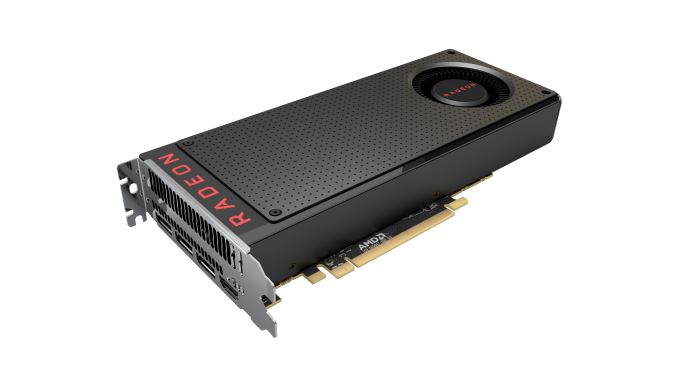

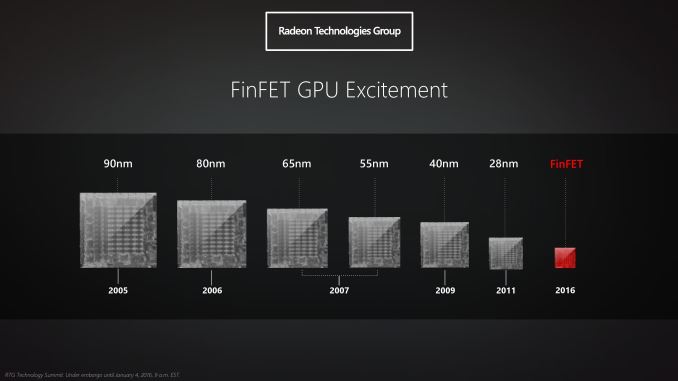
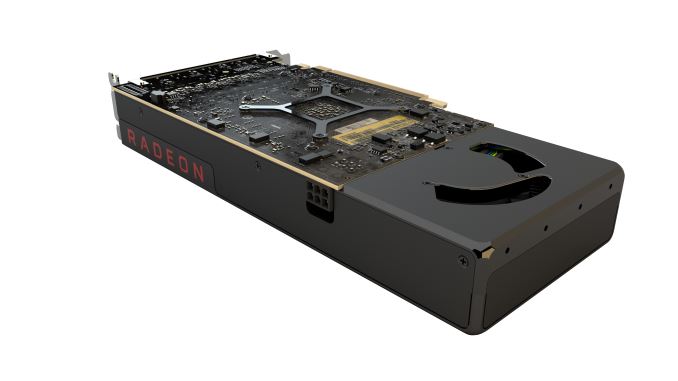




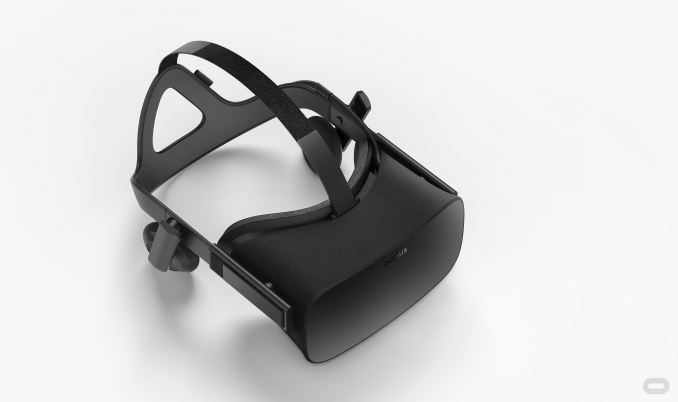









377 Comments
View All Comments
Yojimbo - Wednesday, June 1, 2016 - link
And if it's really slower than the 390X it's going to be going toe-to-toe with NVIDIA's largest GP106 card if NVIDIA clocks it at 1.6 GHz. But the TDP of the NVIDIA card is going to be less than 150W. NVIDIA would have to price that card at $220 or less, I think. It's not too far out of line with what their Pascal pricing has been so far. The GTX 780 was priced at $650 and the GTX 760 had half the cores (clocked higher) and was priced at $250. The GTX 980 was $550 and the GTX 960 had half the cores (clocked the same) and was priced at $200. The GTX 1080 is prices at $600. A GP106 card with half the cores clocked the same, priced at $220 seems about par for the course.Eden-K121D - Wednesday, June 1, 2016 - link
But the efficiency is still less than 1070GTX 1070 - 6.5 Tflops for 150W TDP with 8 pin connector
RX 480 ~ 5.5 Tflops for 150W TDp with 6 pin connector(absolutely no overclocking headroom)
Yojimbo - Wednesday, June 1, 2016 - link
Yeah. I do think the RX480 is far less efficient, but TDP is a poor substitute for performance per Watt efficiency, and I wouldn't directly compare real world Pascal performance to real world Polaris performance by theoretical peak performance. NVIDIA cards have been more efficient in terms of real world performance compared with peak theoretical performance. That pushes the efficiency argument further in the favor of NVIDIA, of course. GCN 4 may make more efficient use of its peak theoretical performance than previous generations of GCN, but I doubt its caught up to Pascal.SaberKOG91 - Wednesday, June 1, 2016 - link
If anything, 150W is an overestimate. Think of it this way: 75W Max for PCIe x16 slot. Another 75W for 6-pin or another 150W for 8-pin.For the RX480 the 6-pin just means that they expect it to draw more than 75W and that overclockers might want a little head room for the reference cards.
For the 1070, it is probably running close to the 150W TDP at 100%, so NVIDIA opted to give another 75W to offset peak power throttling and to give headroom for factory overclocked cards (a la 980 Ti).
But of course, that's just peak power draw. I expect that Polaris averages closer to 100W and peaks near 125W.
Valantar - Wednesday, June 1, 2016 - link
Tom's Hardware's reviews have great power measurements (detailed graphs of card-only power draw over time), but unfortunately they don't have that for the 1070 yet. However, if the 1080 is anything to go by, the 1070 averages very close to TDP (the 1080 in their measurements averages at 173W, while peaking at around 300). The 8-pin connector is most likely for several reasons: a) most importantly: Pascal, like Maxwell, spikes at far higher power than its TDP, but only for a few miliseconds at a time, and 8-pin power connectors make up for ay any out-of-spec power spikes; b) to add a modicum of OC potential (although that drives the power spikes far higher, if the 1080 is anything to go by), and c) to underscore that it's a high end card - using a single 6-pin connector for their 2nd-from-the-top card would make many enthusiasts wary and skeptical of its performance potential.Considering that the Fury X shows pretty much the same behaviour as Nvidias architectures in terms of average draws and power spikes, I'd be surprised if the 480 was far below 150W.
rderubeis - Wednesday, June 1, 2016 - link
but look at the price difference. If this 480 is even close to this 1070 its going to b amazingJimster480 - Wednesday, June 1, 2016 - link
The truth is that you don't. If it weren't for scam modes like "Ultra" with fake "optimizations" like "hairworks" there would be no need for these pricy cards.Try checking around YT to see people who do these sort of independent investigations into Ultra settings in most games and you will notice that there are stupid things such as 8 million tessellated textures on rocks for no reason. Something that just kills GPU performance.
I have found that I can still play most games on high @ 60fps in 1080p mid/high settings with my 2013 7870Ghz which I bought for $125 on sale back then.
Meteor2 - Wednesday, June 1, 2016 - link
But it looks better.Michael Bay - Wednesday, June 1, 2016 - link
>hairworksThey should have done it just for the AMD user butthurt factor alone.
Alexey291 - Wednesday, June 1, 2016 - link
Shame it looks so awful though